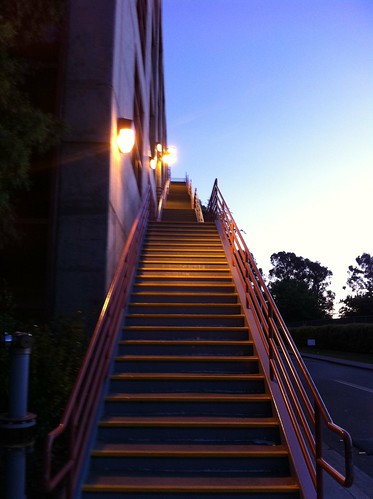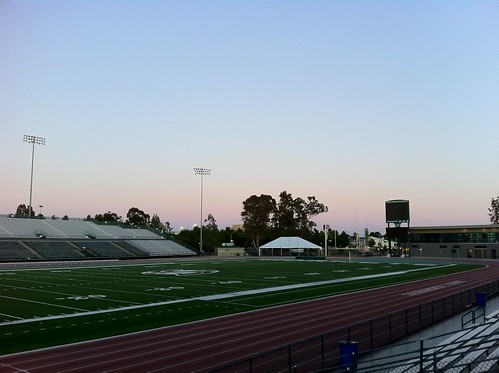Running stairs is a common training method used by athletes and people who want to lose wight fast. This high-intensity workout is a successful form of exercise because it quickly elevates your heart rate, involves your entire body, burns a lot calories and improves your body composition. Stair running is superb training for running. In addition to strengthening the muscles around the knees, stair running builds stamina and overall lower-body strength, works the gluteal muscles and quadriceps more than roadrunning and is a highly efficient workout in terms of the amount of timespent at very high intensity.The first reason that stairs are so effective is that going uphill (against gravity) will always force your body to work much harder and will increase your strength without even lifting weight. It’s no coincidence that many sports legends have used going up hill to take their conditioning to elite levels. Look no further than 7 times Tour De France Cycling Champion Lance Armstrong when it comes to hill training. Once he reached the hill stages in these races it was virtually over for the rest of the field. Credit this to his persistent training against gravity. The even greater thing about hill training is that the results are achieved in far less time than traditional training. A tough stair workout can take less than 15 minutes and yield the same results as an hour long workout. Which would you rather do?The second reason is because running up stairs is anaerobic and this has been shown anecdotally and scientifically to produce greater fat loss results in less time then traditional aerobic work. Aerobic (with oxygen) work simply means that your body utilizes oxygen to convert fat to energy. The problem is that the aerobic process is very slow and cannot generate energy quickly enough for higher intensity work like running fast or sprinting up stairs. That is why the anaerobic (without oxygen) energy system is used because this system can be called upon for quick energy and doesn’t require oxygen. The bottom line is anaerobic work will yield far greater results than aerobic work and you can just take a quick look at aerobic and anaerobic activities to convince yourself. Who would you rather look like?First we have marathoners who often look weak and string. And I’m even talking aboutnelite marathoners. Shouldn’t elite athletes have the best physiques? On the other hand you have sprinters which have amazing physiques and low body fat levels. You’ll never see an elite sprinter or even a high school sprinter with a weak and stringy body. The more ironic thing is that marathoners spend much more time training than sprinters. Which would you rather do? Work less and look better or work more and look worse. The only reason I’ve found for not including stair work or hill work into workouts are either you can’t find a good hill or stairs or they are just too brutal. Make no mistake these workouts are tough. But no one ever said getting in top condition was easy.
Running Stairs Technique
•Step on every other step. This manner of running ensures proper stride frequency and speed of running
•Use your whole body. running and climbing are whole-body movements. Engage all your muscles – not just the legs.
•Use the quads. Climb stairs by pushing with your thighs. Make sure not to completely extend your legs – this puts too much strain on your knees. Instead, run by keeping your legs semi-flexed throughout.
•The role of the posterior chain. The muscles of the back of your legs – calves, hamstrings (back of your thighs) and glutes (your butt) are responsible for most of the movement that occurs in running and jumping. Don’t make the mistake to push through your knees only. Instead, try to use your posterior chain and extend your hips.
•Run on your toes. Just a quick note here – when running try to step on your toes or more specifically the place between your toes and your mid foot. That’s how all animals run – they step on their paws and on NOT their heels.
•Use your arms. Make sure to use your arms to help you with the movement. Keep your elbows in, shoulders down (not shrugged) and your arms semi-flexed (like a sprinter).
Suprisingly after Saturdays half marathon (12.2 miles) my legs were not sore at all! Only think though is I got these two extremely painful blisters under my toenails. I lost 4 toe nails last year. My goal is to NOT lose anymore. So instead of running I decide to run stairs near the parking garage and then on the bleachers at the football feild in California State University Sacramento. I use to run up these stairs and run on the track all the time in High School. Tonight I ran up and down the stairs about 15 times times.
SAC State has hosted a few of the USA Outdoor Track and Field Championships. I have seen some amazing athletes run on this track...Micheal Johnson, Maurice Green, Gale Devers and Marion Jones, I don't care what the reports say about her, she is still AMAZING!







Great job running the stairs! Such a great workout, but definitely a tough one!
ReplyDeleteWOW! I am seriously loving this post. Such good information and tips...I learned a lot from this. I never really knew why people ran stairs or what the benefits may be but this has me totally convinced that it is an awesome workout...and I am all about results in a quicker amount of time!
ReplyDeleteLove this post Lisa and a good reminder why stars/hills should be a weekly workout for serious training.
ReplyDeleteLove the pics of the Sac St track. Inspiring!